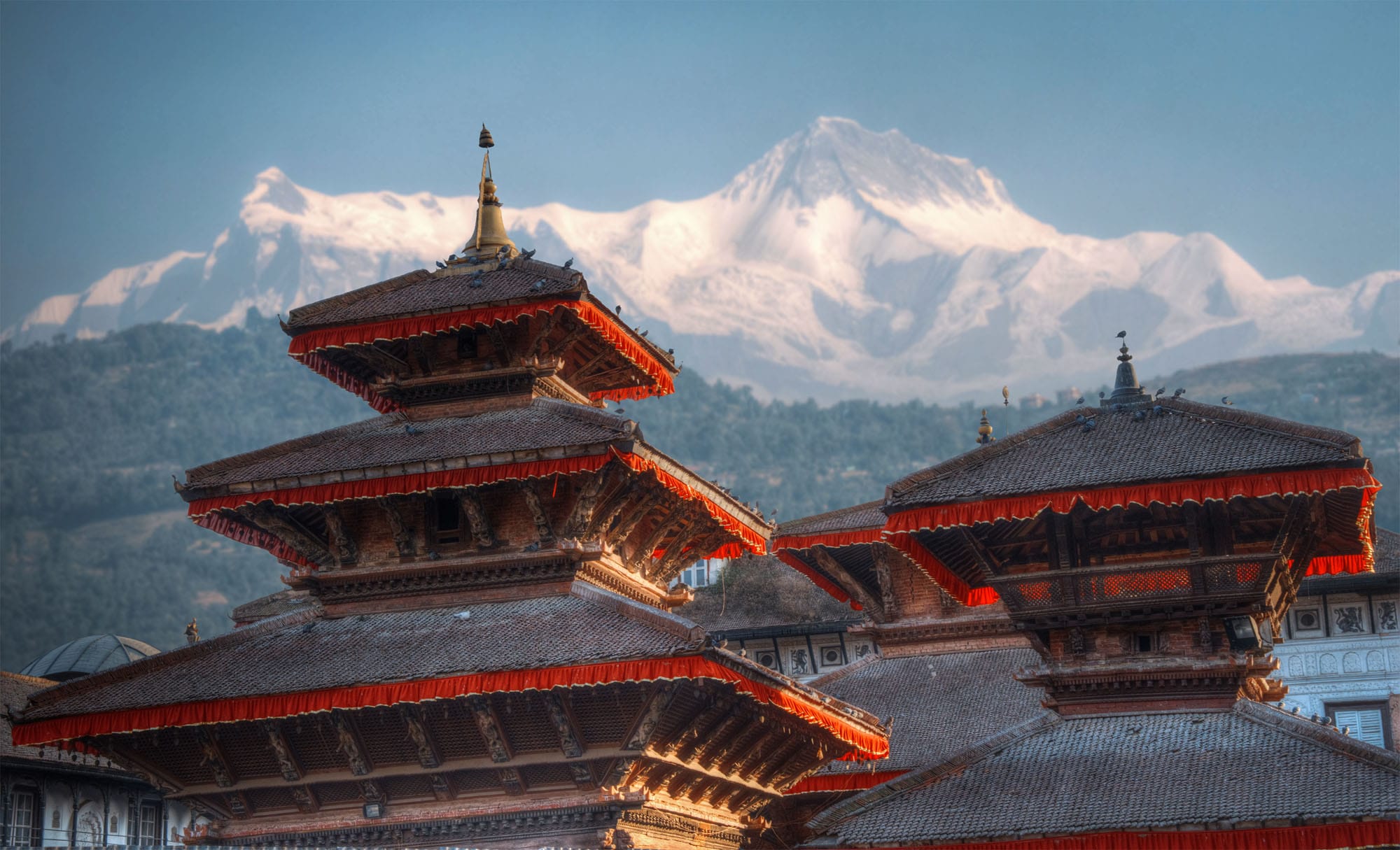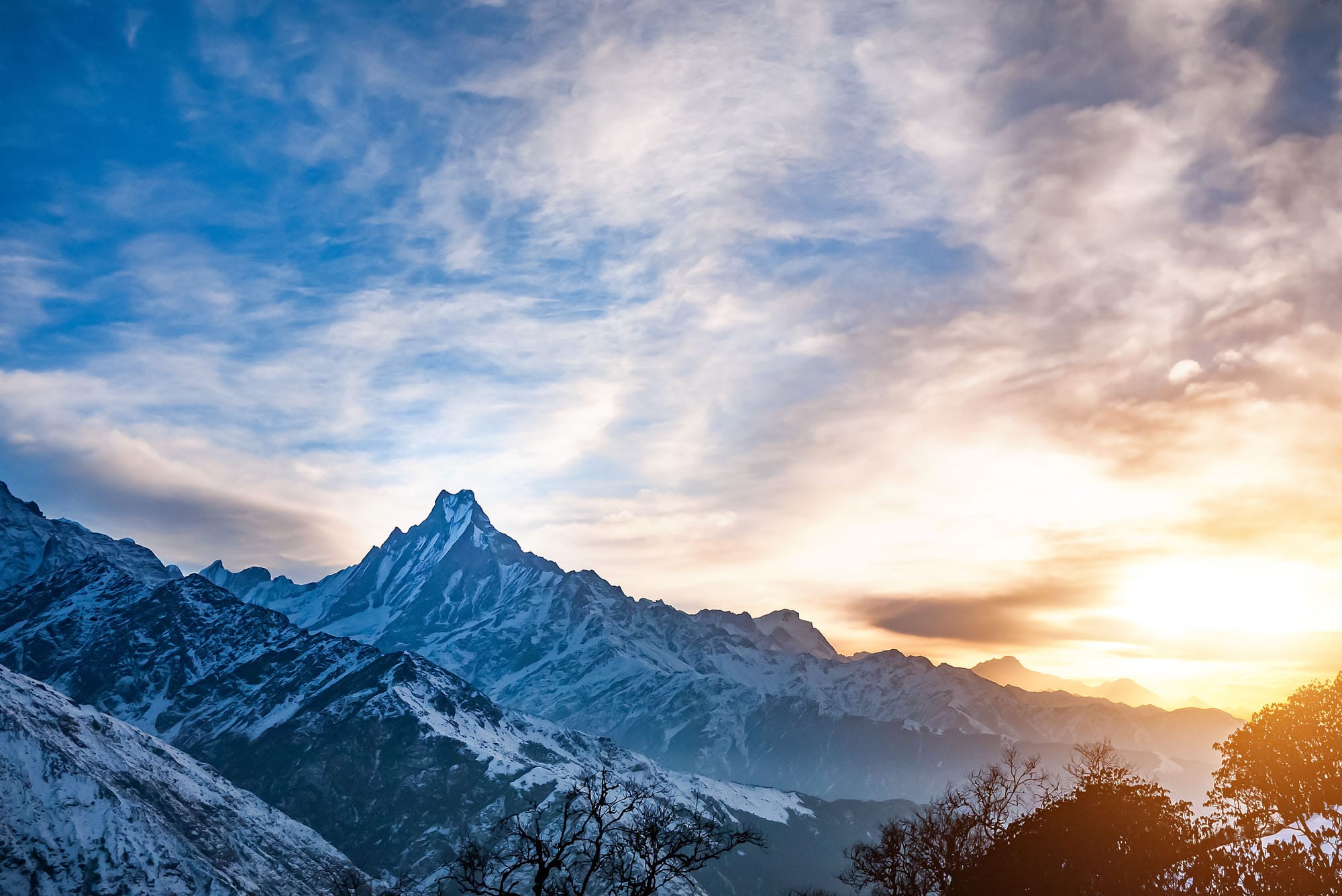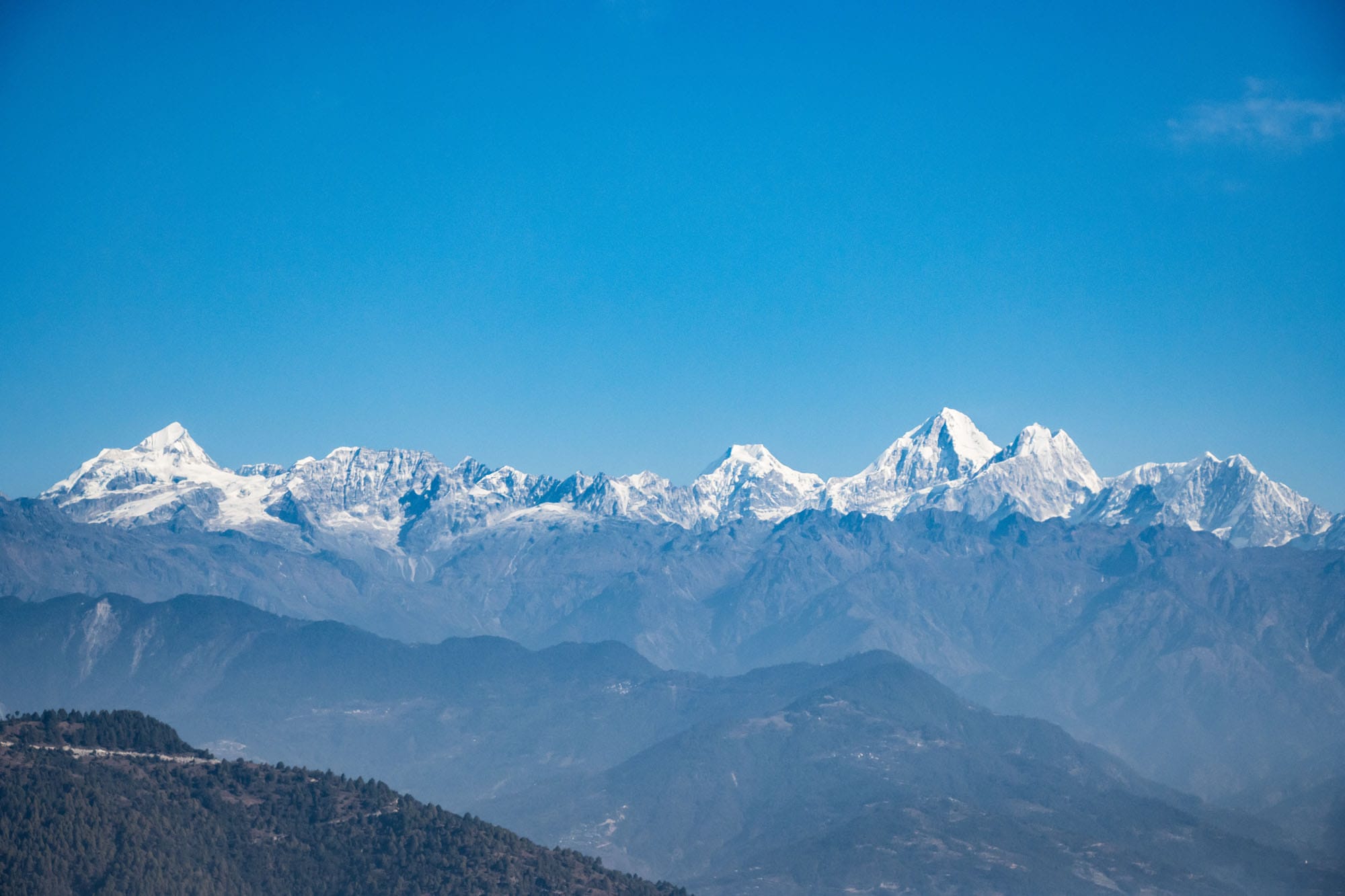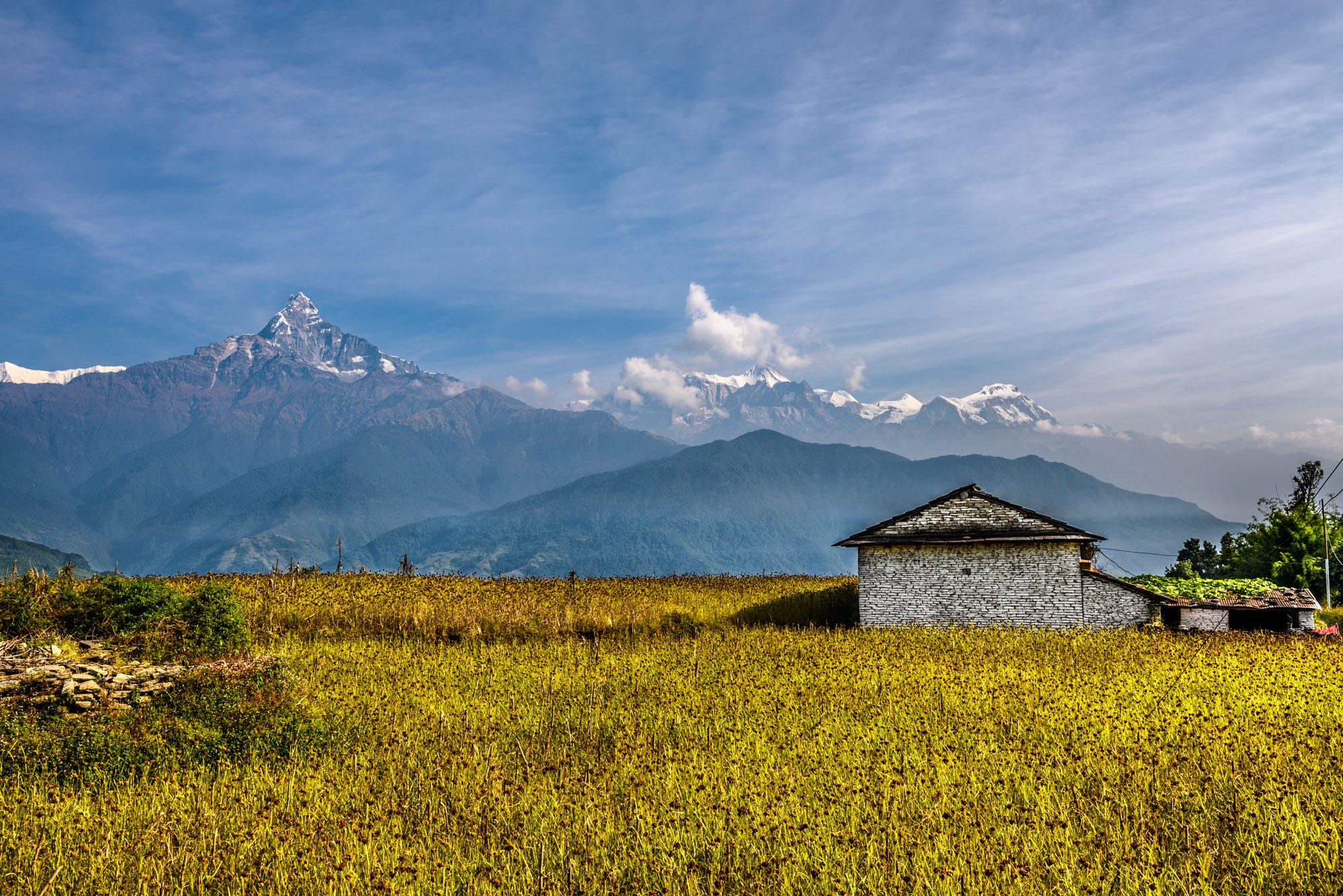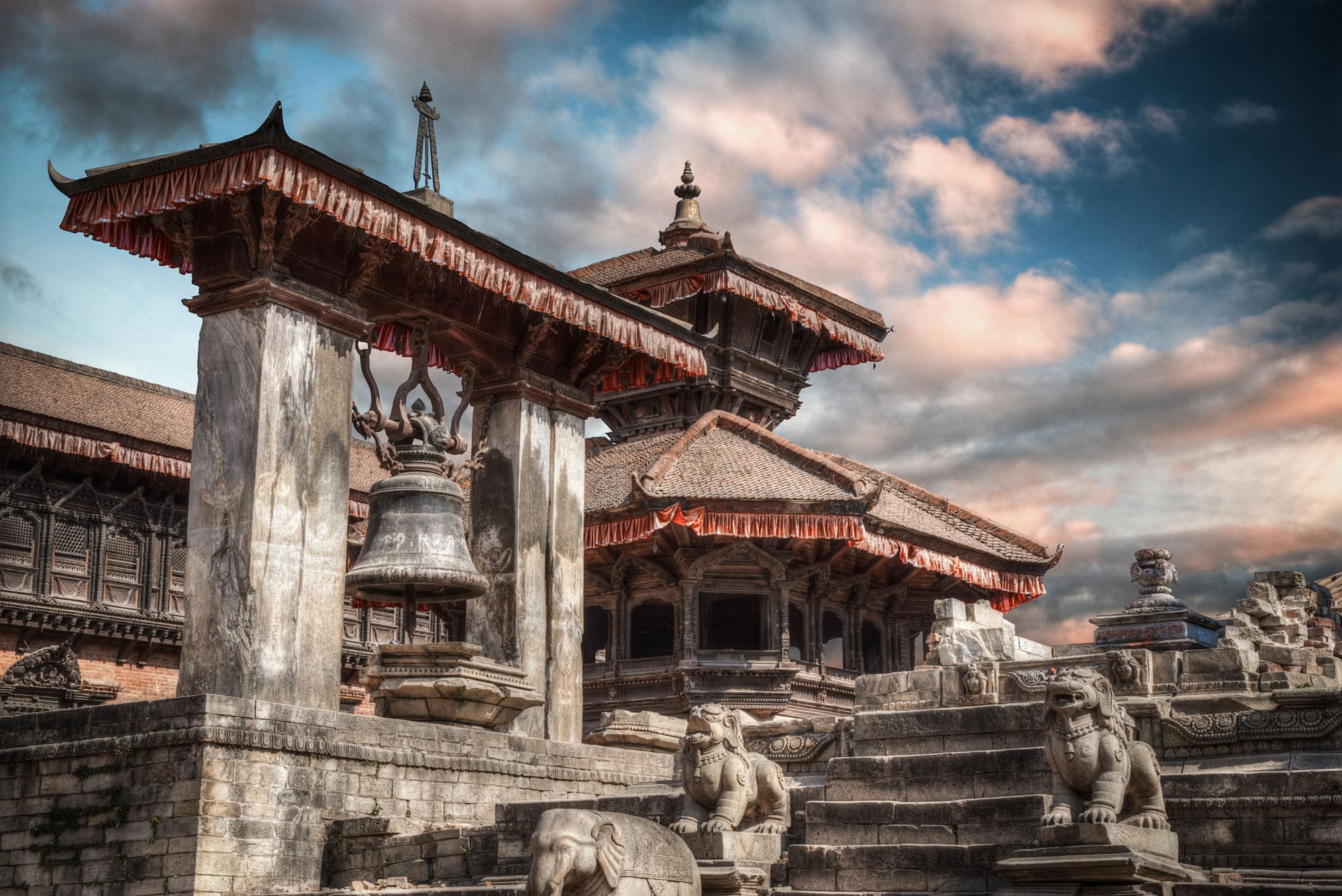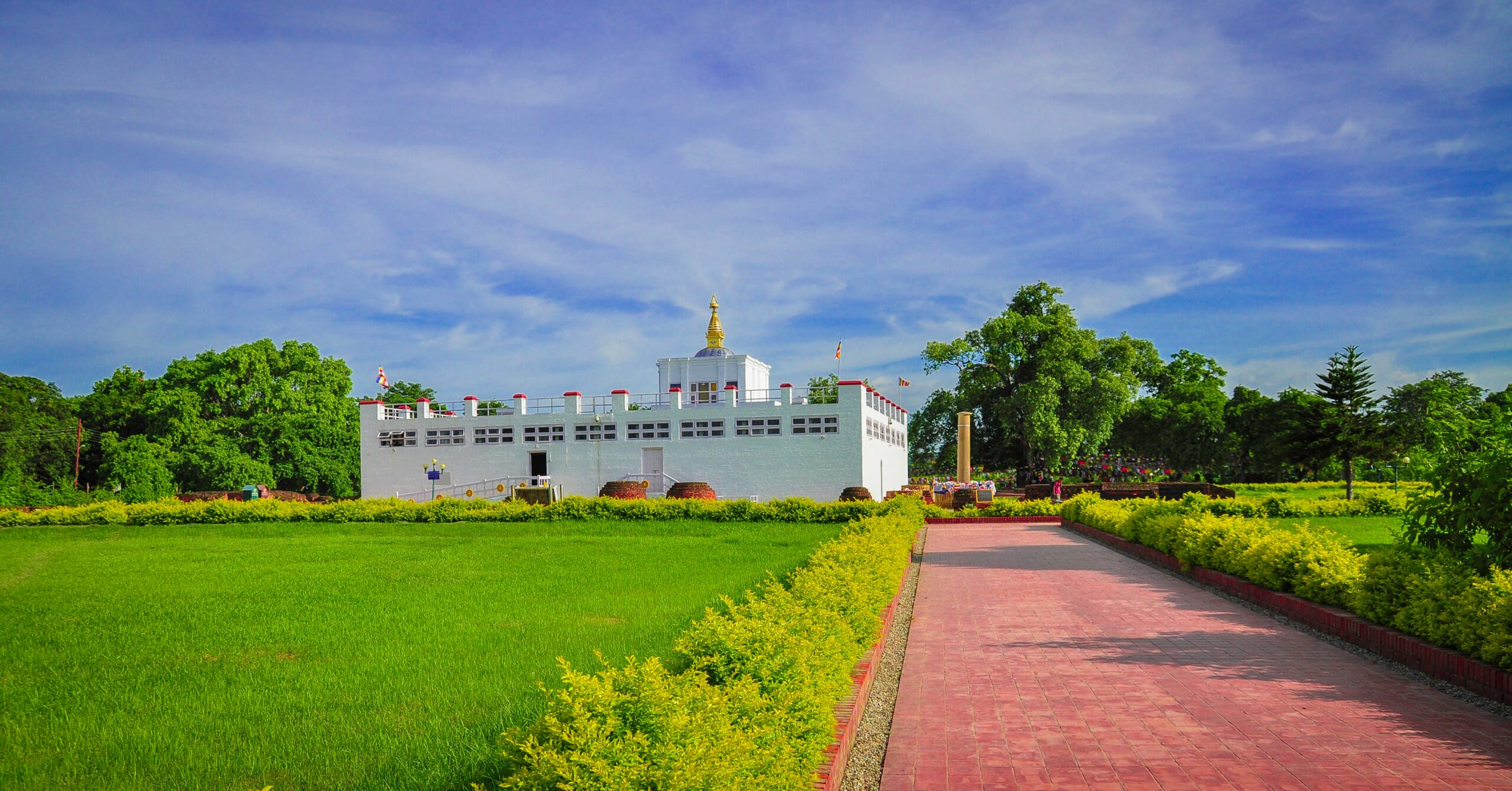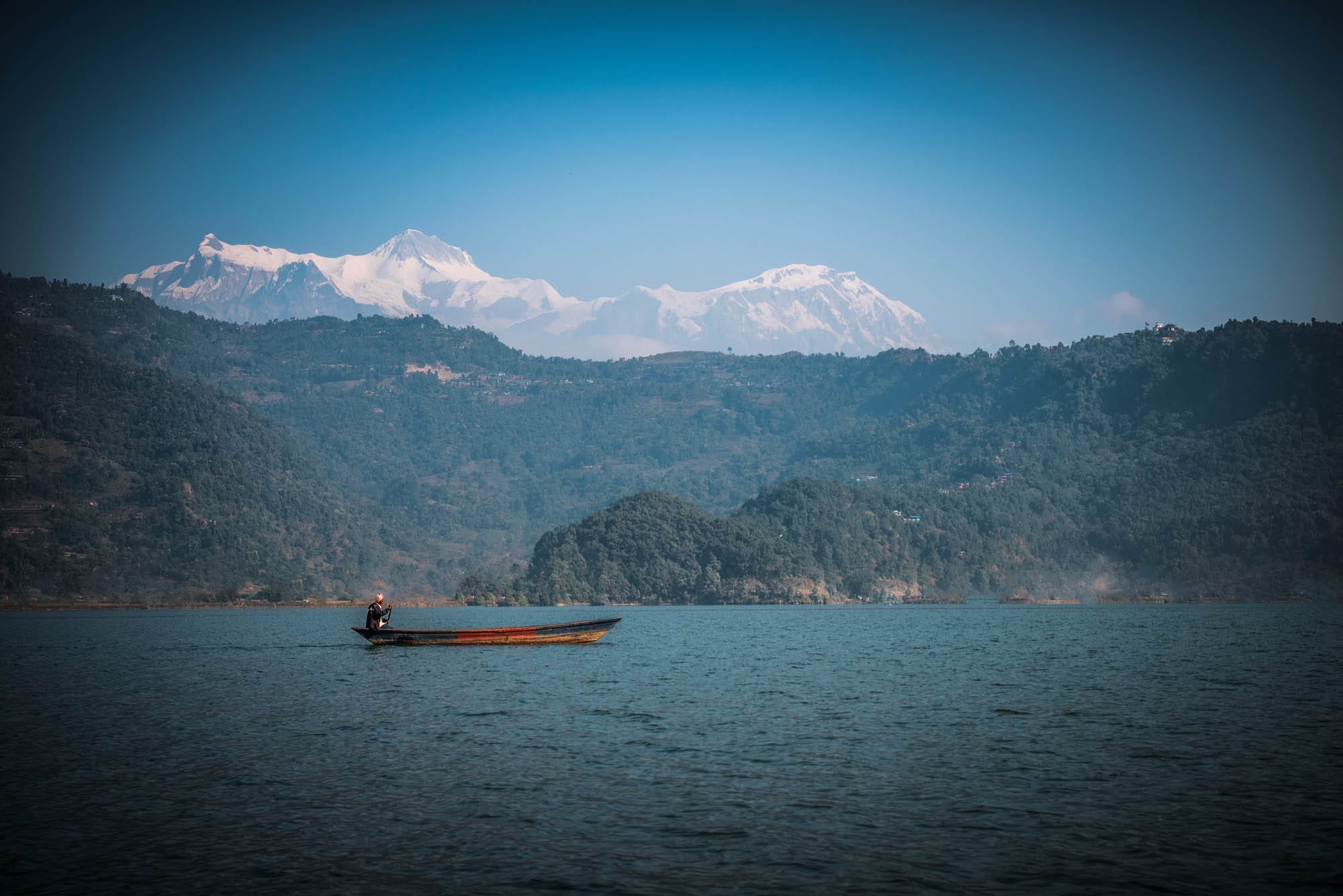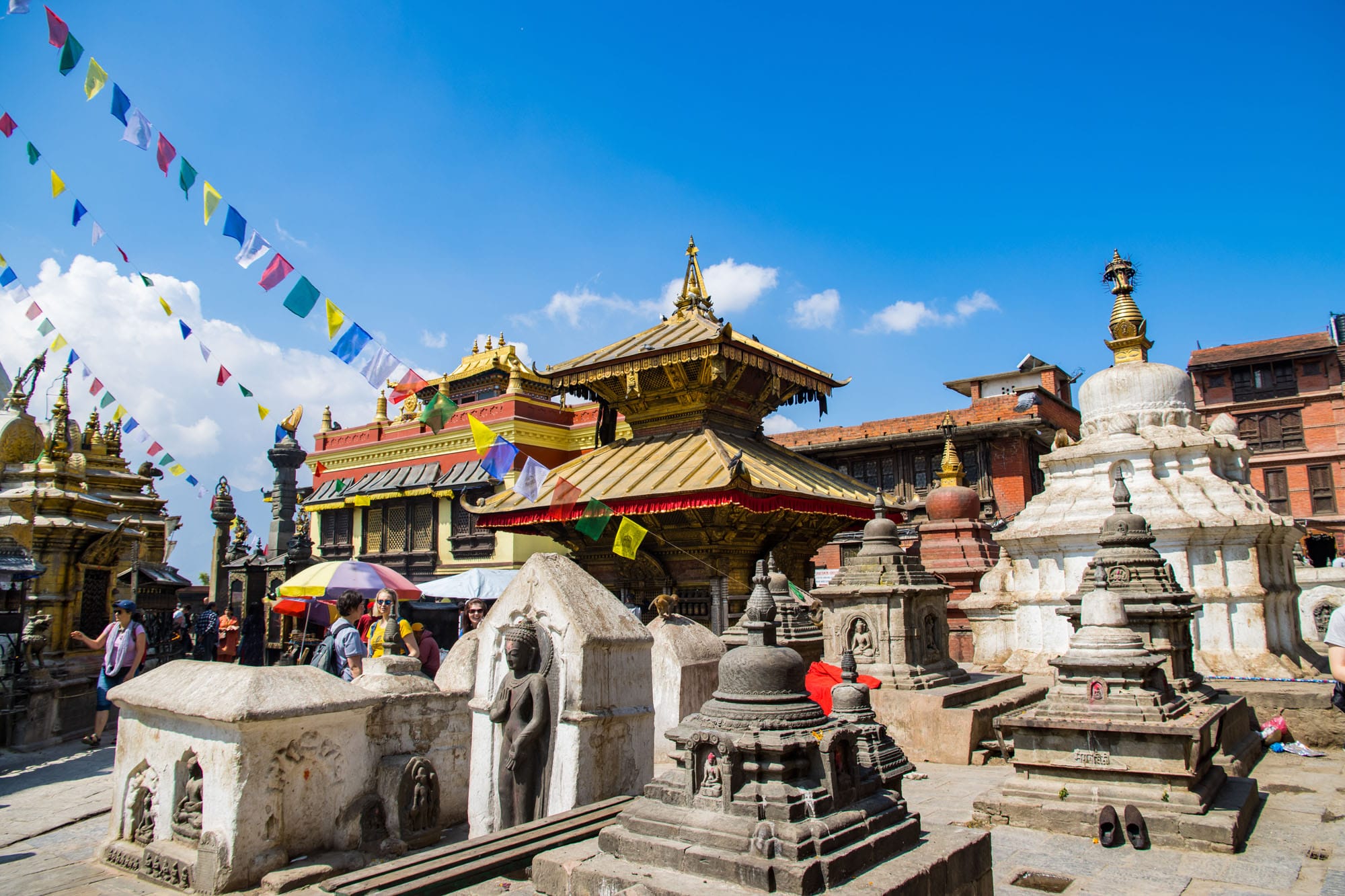Annapurna Helicopter Tour – 1 D
Best Season
Highest Altitude
Trip Overview
The Annapurna Helicopter Tour is an unforgettable one-day adventure designed for those who want to experience the majestic Himalayas . This Annapurna Helicopter Tour, with a minimum requirement of two participants. This journey offers a once-in-a-lifetime opportunity. Along the, you will get the chance to soar above the stunning landscapes of Nepal. Starting from Kathmandu, you will embark on a thrilling helicopter ride. Along the ride, you will explore lush valleys, terraced fields, and traditional villages as you make your way towards the Annapurna range.
As you approach the mountains, the breathtaking views of some of the world’s highest peaks, including Annapurna I and Machapuchare. The helicopter will land at the Annapurna Base Camp, situated at an altitude of 4,130 meters. There you can step out and immerse yourself in the serene beauty of the surroundings. This brief stop allows you to take in the panoramic views, capture stunning photographs, and feel the crisp mountain air on your face.
After spending some time at the base camp, the helicopter will take you on a scenic flight back to Kathmandu, offering more incredible views of the Himalayas along the way. This Annapurna Helicopter Tour is perfect for travelers who are short on time but still want to experience the grandeur of the Himalayas up close. With hotel transfers, expert guides, and all necessary permits included. It’s a luxurious way to explore one of Nepal’s most iconic regions. Whether you’re an adventure seeker or simply looking for a peaceful escape, this adventure promises to be a truly memorable experience.
Highlights
- Thrilling helicopter ride from Kathmandu to Annapurna Base Camp
- Panoramic views of the Annapurna range, including Annapurna I and Machapuchare
- Landing at Annapurna Base Camp for a close-up experience of the Himalayas
- Scenic flight back to Kathmandu with more stunning mountain views
- Ideal for travelers with limited time who want to experience the Himalayas
Itinerary
Your day starts early, around 5:30 AM, when you’re picked up from your hotel in Kathmandu while the city is still waking up. As you drive through the quiet, misty streets toward the domestic terminal of Tribhuvan International Airport, there’s a growing sense of anticipation. At the heliport, you’ll be greeted by the ground crew for a short briefing on safety protocols and the day's route. The crisp morning air and golden light make for a perfect window to begin your aerial Himalayan adventure. You’ll board the helicopter with a small group, ensuring unobstructed views from each seat. Once buckled in and headsets on, the rotors begin to spin, and soon, you're rising above the Kathmandu Valley—watching the city fade beneath the morning clouds.
As the helicopter climbs and veers westward, you’ll pass over lush forested ridges, scattered villages, and wide river valleys. The terrain shifts rapidly from subtropical lowlands to alpine wilderness. In the distance, the snow-clad peaks of the Annapurna Range begin to emerge, with their pristine summits reflecting the rising sun. You'll glide past Dhaulagiri, Nilgiri, Machapuchare (Fishtail), and other Himalayan giants before entering the sacred Annapurna Sanctuary. The excitement intensifies as the aircraft descends into a natural amphitheater of towering peaks, revealing the hidden world of Annapurna Base Camp (ABC) nestled at 4,130 meters. The pilot expertly lands in the snow-covered basin, placing you right in the heart of the Himalayas—a dreamlike scene encircled by 360-degree Himalayan vistas.
Stepping out of the helicopter, you're instantly enveloped by the high-altitude stillness and the sheer grandeur of your surroundings. Towering glacial walls, deep blue skies, and the chilling yet refreshing air make for an unforgettable sensory experience. You’ll have approximately 20–30 minutes to explore the base camp area, take stunning photos, and simply stand in awe of nature’s scale and beauty. The time is purposefully limited to avoid altitude-related risks, but it’s enough to immerse yourself in the surreal setting. You may even enjoy a warm drink from the nearby teahouse, if open, while gazing up at the mighty south face of Annapurna I. Every direction you look offers a postcard-perfect view, with the silence occasionally broken by distant rumblings of glaciers.
After your time at the base camp, the return flight begins—offering a new angle of the Himalayas and a peaceful glide back toward civilization. The chopper ascends above the sanctuary, giving you one last sweeping view of the amphitheater before cruising above cascading waterfalls, deep gorges, and forested hills. The journey retraces a different aerial route over charming Gurung villages, river terraces, and hilltop monasteries that dot the mid-hills of central Nepal. The pilot may slightly adjust the route depending on weather, offering varied scenic views of the Modi Khola river valley or glimpses of Pokhara in the distance. Each turn of the rotor reveals a new landscape, blending raw Himalayan wilderness with the cultural richness below.
Touching down in Kathmandu by mid to late morning, you’ll be transferred back to your hotel with your heart still racing and your camera full of incredible memories. Though the entire tour spans only a few hours, it delivers a complete and deeply immersive Himalayan experience. The juxtaposition of starting your day in a city and standing at the foot of the world’s tenth highest mountain just hours later is surreal. Whether it’s for a special occasion, a photographic dream, or a bucket list goal, the Annapurna Helicopter Tour is the perfect fusion of adventure, comfort, and awe-inspiring beauty—all condensed into one unforgettable day.
Book Now
Send an Inquiry
Got A Question?

Mr. Shishir Dhakal
Price Inclusion
- Helicopter flight from Kathmandu to Annapurna Base Camp and back
- Hotel transfers in Kathmandu
- Landing fees at Annapurna Base Camp
- All necessary permits
- Expert guide during the tour
Price Exclusion
- Meals and beverages
- Personal expenses
- Travel insurance
- Tips for the guide and pilot
Additional Information
Meals and Accommodation for Annapurna Helicopter Tour
Since this is a one-day tour, there is no overnight accommodation required. However, for those arriving in Kathmandu the night before, you’ll stay in a standard hotel with modern amenities and complimentary WiFi to prepare for the adventure.
As this is a one-day trip, meals are not typically included during the flight itself. However, most tours will provide breakfast at your hotel before departure. Lunch and dinner can be enjoyed in Kathmandu at your leisure or as part of the package if specified. The meal at Annapurna Base Camp is generally not included due to the short nature of the trip, but visitors can enjoy the crisp mountain air and take in the surroundings during their stop.
Best Season for Annapurna Helicopter Tour
The ideal seasons for the Annapurna Helicopter Tour are during spring (March to May) and autumn (September to November) when the weather is stable, offering the clearest skies and most stunning mountain views.
Spring (March to May)
- Weather: Mild temperatures with blooming rhododendrons and clear skies.
- Temperature:
- Lower elevations (Kathmandu, Pokhara): 10°C to 20°C during the day, 5°C to 10°C at night.
- Higher elevations (Annapurna Base Camp, 4,130m): -5°C to 10°C during the day, -10°C to -5°C at night.
- Highlights: Ideal temperatures and vibrant landscapes make it an excellent time for scenic views.
Autumn (September to November)
- Weather: Stable, clear skies, and cooler temperatures.
- Temperature:
- Lower elevations (Kathmandu, Pokhara): 10°C to 20°C during the day, 5°C to 10°C at night.
- Higher elevations (Annapurna Base Camp, 4,130m): -5°C to 10°C during the day, -10°C to -5°C at night.
- Highlights: Post-monsoon clarity provides breathtaking views of the Annapurna range and ensures perfect visibility.
Winter (December to February)
- Weather: Cold with potential snowfall in the higher areas, including the base camp.
- Temperature:
- Lower elevations (Kathmandu, Pokhara): 0°C to 10°C during the day, -5°C to 0°C at night.
- Higher elevations (Annapurna Base Camp, 4,130m): -10°C to -5°C during the day, -20°C to -10°C at night.
- Challenges: Fewer trekkers and quieter trails, but colder temperatures and possible snow at the base camp can limit views and accessibility.
Monsoon/Summer (June to August)
- Weather: Warm and humid at lower elevations with frequent rain.
- Temperature:
- Lower elevations (Kathmandu, Pokhara): 15°C to 25°C during the day, 10°C to 15°C at night.
- Higher elevations (Annapurna Base Camp, 4,130m): 0°C to 10°C during the day, -5°C to 0°C at night.
- Challenges: Rain can obstruct views, but the lush landscape and fewer crowds make it a unique time for a quieter experience.
Equipment Checklist
Though this is a short day tour, it’s still essential to bring some basic items to ensure comfort and safety in high-altitude conditions.
1. Clothing
- Base Layer: Lightweight, moisture-wicking shirt to stay comfortable.
- Outer Layer: Insulated, windproof jacket; temperatures in the mountains can be cool even during the day.
- Trekking Pants: Comfortable pants for walking around Kyanjin Gompa.
- Warm Accessories: Hat, gloves, and a neck gaiter to protect against cooler air at high altitudes.
2. Footwear
- Trekking Boots: Sturdy and comfortable boots for short walks on uneven terrain.
- Socks: Warm, moisture-wicking socks to keep your feet comfortable.
3. Accessories
- Sunglasses with UV Protection: Essential to protect against strong sunlight and glare from the snow.
- Sunscreen and Lip Balm: High SPF sunscreen and lip balm to protect against sun exposure.
- Water Bottle: A reusable water bottle to stay hydrated throughout the tour.
4. Electronics and Extras
- Camera/Smartphone: For capturing the stunning scenery; consider a small power bank for extra battery life.
- Personal Toiletries: Hand sanitizer and wet wipes for basic hygiene.
- Cash: Bring a small amount of local currency in case you want to buy snacks or souvenirs at Kyanjin Gompa.
5. Documents
- Passport/ID: Necessary for identification and registration.
Final Tips
- Dress in Layers: Mountain temperatures can vary, so layered clothing is best.
- Pack Light: Carry only essential items to stay comfortable on the helicopter.
- Weather Check: Helicopter flights depend on weather conditions, so keep updated on any potential changes to your tour plan.
Frequently Asked Questions(FAQs)
Is Nepal safe for solo travelers?
Yes, Nepal is considered safe for solo travelers. The only catch is where you are going. There are many places you arenot allowed to travel solo, but most of the moderate treks and destinations, It is very safe to travel solo.
What is the best time to trek in the Everest region?
The best time to trek in the Everest region is from September to November and from March to May, when the weather is generally clear and calm. During these periods, the temperatures are mild, and the risk of altitude sickness is lower. September to November is considered the best time to trek to Everest Base Camp, as the weather is usually stable, and the trails are less crowded. From March to May, the rhododendron forests are in full bloom, adding a vibrant touch to the landscape. We avoid the monsoon season (June to August) and the winter months (December to February) due to heavy rainfall and extreme cold, which can make trekking conditions challenging. Our experienced guides will help you plan your trek to ensure that you take advantage of the best weather conditions and make the most of your time in the Everest region.
How can I provide feedback about my experience with Mount Elegance Treks?
Here is a potential answer for the FAQ question:
How can I provide feedback about my experience with Mount Elegance Treks?
We value your feedback and would love to hear about your experience with Mount Elegance Treks. If you have any comments, suggestions, or feedback about your trek, please don’t hesitate to reach out to us. You can email us directly at [email address] or fill out our online feedback form on our website. We also invite you to share your feedback on social media or review platforms such as TripAdvisor and Facebook. Your input helps us to continually improve our services and ensure that future trekkers have an exceptional experience with us. We appreciate your feedback and look forward to hearing about your adventures with Mount Elegance Treks!
What languages do Mount Elegance Treks guides speak?
Our guides at Mount Elegance Treks are multilingual and speak fluent English, as well as the local languages, including Nepali, Sherpa, and other regional dialects. This ensures that you can communicate easily with your guide and understand the culture, history, and significance of the places you visit. Many of our guides also speak other languages, such as Spanish, French, German, and Chinese, so don’t worry if your first language isn’t English
- we’ve got you covered. Our guides are trained to provide outstanding service and ensure that you have a seamless and enjoyable trekking experience.
Does Mount Elegance Treks support responsible tourism practices?
Yes, at Mount Elegance Treks, we’re committed to responsible tourism practices that benefit both our clients and the local communities we visit. We believe in operating in a way that respects the environment, culture, and people of the regions we trek in. We work with local guides, porters, and suppliers to ensure that our treks have a positive impact on the local economy and help to preserve the natural beauty of the areas we visit. We also follow all necessary regulations and guidelines to minimize our environmental footprint and promote sustainable tourism practices. By choosing Mount Elegance Treks, you’re supporting a responsible and sustainable tourism operator that cares about the places we visit and the people we meet along the way.
How can I contact Mount Elegance Treks in an emergency?
In the event of an emergency, please don’t hesitate to reach out to us. We have a 24-hour emergency contact system in place, and you can contact us directly on + [phone number] or by emailing [email address]. We also have a dedicated emergency contact person who is available at all times to assist with any urgent matters. Additionally, all our treks are led by experienced guides who are equipped with mobile phones and two-way radios, and can quickly get in touch with us in case of an emergency. We prioritize your safety and well-being, and we’re always here to help in case of an unexpected situation.
Does Mount Elegance Treks arrange domestic flights?
Yes, we can arrange domestic flights for you if needed. For treks that require flights, such as to and from Lukla for the Everest Base Camp trek or to Jomsom for the Annapurna Circuit trek, we can book your flights in advance. We have established relationships with reputable airlines and can ensure that you receive the best available flights. We’ll also handle any necessary flight changes or cancellations, so you can focus on preparing for your adventure. Just let us know if you need domestic flights, and we’ll take care of the arrangements.
What is Mount Elegance Treks' cancellation policy?
At Mount Elegance Treks, we understand that unexpected circumstances can arise, and we’re committed to being fair and flexible. If you need to cancel your trek, our cancellation policy is as follows: cancellations made 30 days or more prior to the departure date will receive a full refund minus the 20% deposit. Cancellations made between 29 days and 15 days prior to the departure date will receive a 50% refund. Cancellations made 14 days or less prior to the departure date are non-refundable. We also offer the option to transfer your booking to a future trek, subject to availability. We recommend that you purchase travel insurance to cover any unforeseen circumstances that may affect your trip. If you have any questions or concerns about our cancellation policy, please don’t hesitate to contact us!
Do I need a guide for trekking in Nepal?
While it’s possible to trek in Nepal without a guide, we highly recommend hiring a experienced guide or joining a guided trek for a safer and more enjoyable experience. A guide can:
* Provide valuable local knowledge and insights about the culture, history, and geography of the region
* Help navigate challenging terrain and ensure your safety
* Assist with permit procedures and arrangements
* Offer guidance on acclimatization and altitude sickness prevention
* Enhance your overall trekking experience with fascinating stories and knowledge
At Mount Elegance Treks and Expedition, our experienced guides are certified, licensed, and trained to provide exceptional support and care. We offer a range of guided trekking options to suit all levels and interests, from beginner-friendly routes to challenging adventures. Whether you’re a seasoned trekker or a first-time visitor, our guides will ensure that you have a memorable and hassle-free journey in the beautiful Himalayas.
What are the most popular tourist destinations in Nepal?
Nepal is a treasure trove of natural wonders, rich culture, and spiritual heritage, offering a wide range of exciting destinations for tourists. Some of the most popular tourist spots in Nepal include:
* **Kathmandu Valley**: A UNESCO World Heritage Site, home to ancient temples, palaces, and vibrant streets.
* **Chitwan National Park**: A haven for wildlife enthusiasts, offering jungle safaris and opportunities to spot exotic animals like rhinos and tigers.
* **Pokhara**: A picturesque lakeside town with breathtaking views of the Himalayas, perfect for trekking, paragliding, and boating.
* **Annapurna Circuit**: A world-famous trek that takes you through diverse landscapes and villages, offering stunning views of the Annapurna mountain range.
* **Lumbini**: A sacred site for Buddhists, marking the birthplace of Lord Buddha.
* **Everest Region**: A mecca for adventure seekers, offering treks to Everest Base Camp, countless challenges, and breathtaking views of the highest mountain in the world.
At Mount Elegance Treks and Expedition, we can help you plan your trip to these and other incredible destinations in Nepal. Our experienced guides and staff can provide expert advice, itinerary planning, and logistics to ensure that you have a memorable and enriching travel experience in Nepal.
What is the weather like in Nepal throughout the year?
Nepal’s weather varies greatly throughout the year, with four distinct seasons: spring, summer, autumn, and winter. The climate differs significantly across the country, with the Himalayas creating a range of microclimates.
* **Spring (March to May)**: Mild temperatures, with average highs around 22°C (72°F), and occasional rain showers. This is an ideal time for trekking and sightseeing.
* **Summer (June to August)**: Hot and humid, with temperatures ranging from 15°C to 30°C (59°F to 86°F). The monsoon season brings heavy rainfall and occasional landslides.
* **Autumn (September to November)**: Comfortable temperatures, with average highs around 20°C (68°F), and clear skies. This is a popular time for trekking and outdoor activities.
* **Winter (December to February)**: Cool to cold temperatures, with average lows around 2°C (36°F), and occasional snowfall in the mountains. This is a great time for winter sports and cultural events.
At higher elevations, the weather can be unpredictable and colder, with snow and ice possible even in spring and autumn. Mount Elegance Treks and Expedition recommends checking the weather forecast before your trip and packing accordingly. Our experienced guides and staff can also provide valuable insights and advice on navigating Nepal’s diverse climate.
What items should I pack for a trip to Nepal?
When packing for a trip to Nepal, it’s essential to consider the country’s climate, culture, and altitude. Nepal’s weather can be unpredictable, with sudden changes in temperature and precipitation, especially in the mountains. We recommend packing:
* Lightweight and breathable clothing, including layers for cold evenings
* Waterproof jacket and pants
* Sturdy hiking boots or shoes
* Warm hat, gloves, and scarf for high-altitude treks
* Sun protection, including sunscreen, sunglasses, and a hat
* Insect repellent and personal first-aid kit
* Power adapter and voltage converter for charging electronic devices
*Reusable water bottle and water purification tablets or filter
* Cultural attire, such as comfortable pants and modest tops, for visiting temples and villages
* Emergency funds, travel insurance, and copies of important documents
At Mount Elegance Treks and Expedition, we can provide you with a detailed packing list and guidance on what to expect from the weather and cultural norms in Nepal. Our experienced guides and staff are also happy to help you prepare for your adventure and ensure that you have everything you need for a safe and enjoyable journey.
Do I need a visa to visit Nepal?
Yes, all foreign nationals require a visa to enter Nepal. You can obtain a visa upon arrival at Tribhuvan International Airport in Kathmandu, or at nearby borders. The visa fee varies depending on the duration of your stay, with options for 15-day, 30-day, and 90-day visas. To apply for a visa upon arrival, you’ll need a valid passport with at least 6 months’ validity, a recent photograph, and the visa fee in cash. We recommend checking the official government website for the latest visa requirements and fees. At Mount Elegance Treks and Expedition, we can also provide guidance on the visa application process and help ensure a smooth arrival in Nepal.
Is acclimatization included in the itinerary?
Yes, acclimatization is a crucial aspect of our Everest treks, and we have carefully designed our itineraries to ensure that you have ample time to adjust to the higher elevations. Our treks include scheduled rest days and gradual altitude gains, allowing your body to adapt to the thinner air. We also include optional acclimatization hikes to help you become accustomed to the higher elevations. Our expert guides will monitor your progress and make adjustments to the itinerary as needed to ensure a safe and comfortable trek. By prioritizing acclimatization, we minimize the risk of altitude sickness and ensure that you can enjoy the breathtaking scenery of the Everest region without compromise.
Experiences That Last a Lifetime
Verified Fantastic Annapurna Base Camp Trek Everything was perfectly organized, down to the last detail. Everything ran smoothly and was very well planned. The care and company were absolutely lovely 🙂 it was amazing time. 9 days of trekking with breathtaking views, delicious food along the way, and amazing guides.On top of that, I ended up in the hospital because of appendicitis, and I was never alone — the organizers surrounded me with exceptional care. Thank you Shishir 🙏🏻Verified Very amazing. Very beautiful places. Breathtaking views and the guide @ Mr. Santosh, very nice and amazing talent.The food and culture was purely loss of words to us. Thank you.Verified Najpiękniejsze góry świata, cudowny magiczny czas. Wspaniale doświadczenie, doskonała organizacja, przemili przewodnicy i porterzy, zawsze gotowi pomóc i wesprzeć radą. Wyprawa którą na zawsze pozostanie w moim sercu.Doznania których nie sposób doświadczyć nie biorąc udziału w tej wyprawie. Z pewnością polecę udział w tej przygodzie moim przyjaciołom.Verified Annapurna circuit, Nar Poo trek, Mardi himal, etc This company manages the entire process very responsibly and leads the contract in detail, very kindly and reliably. Finally all costs are more reasonable than other companiesVerified Mr tourism "I had an incredible experience with Mouth elegance during my Mr. Tourism journey! Their professionalism, expert guidance, and warm hospitality made every trek seamless and unforgettable. Highly recommended for anyone looking to explore Nepal’s breathtaking landscapes!"Verified Annapurna Rounding/Punhill.abc Dream-like sea trip February 13 Annapurna Rounding/Punhill.abcTrekkingMeeting with the president and guide Ray at Tammel Hotel...Knowing everything about travel Thank you for moving forward...I was able to leave the trekking. Thank you.Without completing a journey of 20 days With the hard work of well-led Ray GaidenWe had a comfortable and enjoyable trip.Thank you for the careful care of the local travel agent.I wish to visit again next time.We wish the unlimited development of the travel company.Verified The most wonderful and satisying Trek with the best team b I had the most amazing trip. I had been to Poonhill trek ! Thanks to Mr Shishir Dhakal, and Mount Elegance, such a supportive guy ! Without your help, i may not have such good trip ! my best memory of life !


